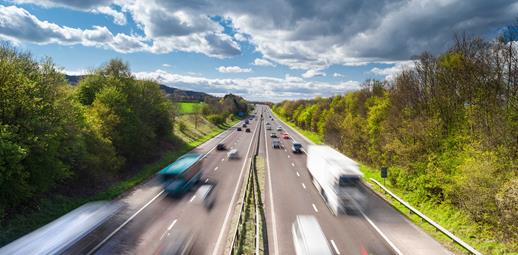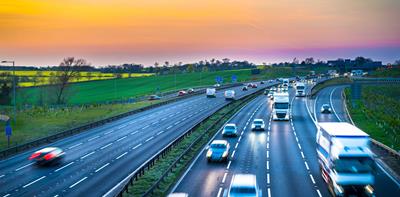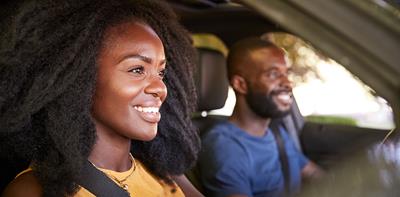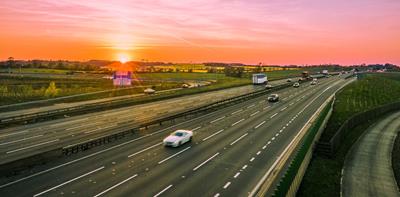
With vehicles thundering along at high speed on multiple lanes, a motorway is definitely not a nice place to have problems with your car.
But if you do break down or your car is damaged on the motorway, it’s important to know how to respond.
EASY AS HACK
The marker posts on motorways will tell you where the nearest emergency phone is, as well as providing you with your exact location.
At a glance
Some quick tips for staying safe on the motorway if you’ve broken down:
- Don’t try to fix your car on the motorway
- Keep pets in the car
- Don’t stay in the car
Common causes of motorway breakdowns
- Tyre blowouts and punctures
- Engine failure or overheating
- Lack of fuel
- Battery faults
- Electrical faults
- Faulty brakes
- Extreme weather conditions
Motorway breakdowns – what to do
1. Take your car off the motorway
Ideally, leave the motorway at the next exit or pull into a service area.
If this isn’t possible, pull on to the hard shoulder. This is the strip of road separated from the motorway’s driving lanes by a solid white line. Stop as far to the left as you can, with your wheels turned to the left.
2. Turn your lights on
Once you’ve stopped your car, put your hazard lights on, as well as other lights - such as rear fog lights or side lights - to increase your visibility, especially if it’s dark or foggy.
3. Get out of your car
You want to get you, your passengers and pets safely away from the passing traffic.
Put on high-vis vests if you have them. Everyone must get out of the car through the left-hand doors, meaning you stay clear of the other vehicles whizzing past. Step behind the barrier and move up the bank if you can. Always stand behind the car, so if it is struck by another vehicle you’ll stay out of harm’s way.
4. Phone for help
Either use your mobile phone to call for breakdown help or walk to one of the emergency telephones along the hard shoulder. There’s one about every mile and, to find your closest one, simply follow the arrows on the posts at the back of the hard shoulder.
The benefit of these free phones is that they’re answered directly by an operator who will know exactly where you are on the motorway.
Always face the traffic while you speak on the phone. Give full details of your situation to the operator and let them know if you’re a vulnerable motorist – for example, if you’re disabled, older or travelling alone.
5. Return to your car but stay outside
After you’ve called for help, wait near your vehicle. Again, stay well away from the carriageway and hard shoulder.
What to do if you’ve broken down on a smart motorway
Smart motorways use different methods of traffic management and control. If you break down on a smart motorway, there may not be a hard shoulder for you to pull onto. If there is no hard shoulder, here’s what you should do:
1. Get to an emergency area
If your car is still driveable, exit the motorway at the nearest junction, emergency area or service station. If you are on a smart motorway then look for the yellow hatched areas where you can stop.
2. Broken down in a live lane?
If you’ve broken down in a live lane, try to get your car into the leftmost lane and as far off the road as possible. Then, turn your hazard lights on. When you’re in the left-hand lane, and it’s safe to do so, get out of your vehicle on the passenger side and wait behind the barrier.
3. Call for help
If you’ve managed to get to a safe place, use the emergency telephone found in the emergency area and give as much information as possible.
How to rejoin the motorway after a breakdown
If your vehicle has been fixed at the side of the road, you’ll need to carefully rejoin the motorway. Here’s how to rejoin the motorway safely:
Rejoining from the hard shoulder
- Build up speed and watch for a safe gap in the traffic to rejoin the carriageway
- Be aware of any other vehicles parked on the hard shoulder
- Use your indicator to let people know you’re rejoining the flow of traffic
Re-joining from the emergency area
- Never leave the emergency area unless National Highways says it's safe to do so. Lane one may need to be closed because there isn’t enough space to build up speed in an emergency area
- Once you’ve been given the all-clear, make sure you indicate to show you’re rejoining the flow of traffic
What NOT to do if you’ve broken down on the motorway
- Whatever type of motorway you break down on, there are some things you shouldn’t do, even if it feels counterintuitive not to.
- Don’t put a warning triangle on the road. While you would do this, when safe, on other road types, it’s simply too dangerous on motorways.
- Don’t attempt even simple repairs, such as a wheel change, as you will put yourself in danger.
- If you’re travelling with a pet, don’t let them out of the vehicle. They’re safer in the car, unless it’s a real emergency. If that’s the case, keep them under careful control on the verge. On a hot day, make sure you wind down the window for your pet.
- Don’t stand next to your vehicle and don’t stand between your car and oncoming traffic.
You can find out more about our car insurance here.
FAQs
Which way should you walk if you’ve broken down on the motorway?
To see which way to walk, look for the motorway marker posts.
The short white posts with a long red mark will point you in the direction of the nearest emergency phone. The emergency phone will automatically flag your location to emergency assistance.
If you can’t get to an emergency phone, you can use your mobile to call for assistance. If you’re calling from your mobile, look for the blue motorway markers. They will have the motorway number, A or B, and then a number. This will provide the emergency assistance with your location.
Can you leave your car if you’ve broken down?
No. If you’ve broken down on the motorway you need to call for roadside assistance to move your car. You’re not allowed to leave your car unattended.
When are you allowed to stop on the motorway?
You’re allowed to stop on motorway for three reasons:
- In an emergency situation like your vehicle breaking down
- If the police direct you to stop, in which case you will be directed to pull onto the hard shoulder
- If traffic comes to a standstill
What happens if I break down on the motorway without breakdown insurance?
If you break down on the motorway without breakdown insurance, don’t panic. You can call an emergency breakdown service directly, and they should be able to sort you out with emergency cover.
Don’t buy breakdown cover online if you’ve already broken down. Most online policies take 24 hours to activate, so you won’t be covered.
Make sure you check with your insurance provider for specific details.
What to do if you break down in roadworks?
Drive to a safe location and look for any signs or instructions from roadworks staff
What to do if your car breaks down on a country road?
Turn on your hazard lights, pull over as far as possible and exit your vehicle safely.


